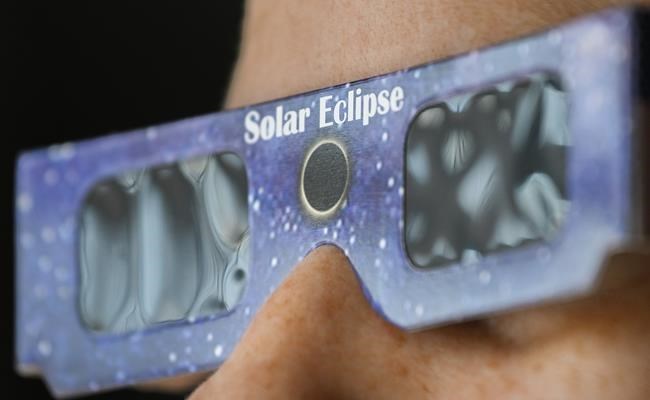Total solar eclipses like the much-anticipated one taking place on Monday are usually thought of as visual experiences.
Lasting memories of the day might include a few minutes of complete darkness, prompted by the rare alignment of the sun, Earth and moon.
The highlight for others, if they're lucky enough to get their hands on a pair of special eclipse glasses to protect their eyes, could be a glimpse of a partially shadowed sun.
But eclipses have historically been more difficult to experience for those living with blindness or low vision. This time around, multiple groups hope to change that by using tools and educational materials designed to make the event more accessible.
"Unfortunately, there are a number of barriers to access astronomy content if you are low vision or blind. It's a very visual science," said Heidi White, outreach officer at the University of Montreal's Trottier Institute for Research on Exoplanets.
"However, in recent years, there has been a substantial amount of work to try and create educational resources for members of the blind community so that they can learn about astronomy in a very interactive way."
In Montreal, considered one of the prime locations in Canada to experience the eclipse, resources will be available across the city for those with visual impairments.
That includes the Montreal Science Centre, which has brought in devices from Harvard University designed to transform the eclipse into an audio-focused experience.
Developed in 2017, the LightSound solar eclipse sonification devices use a technique that converts light intensity to sound. As the moon eclipses the sun, light will begin to dim and the handheld LightSound device will emit a change in musical tone.
The science centre will have two of the 900 devices distributed by the university on hand in a special accessible area. The devices can be attached to headphones or to a speaker to project the sound for a group.
"We thought that having those LightSound devices would permit visitors with low vision or blindness to feel the luminosity coming down," said Sara Arsenault, manager of the Montreal Science Centre Foundation.
"They would feel it at the very same moment as the other citizens around."
The LightSound device epitomizes how the eclipse can be a "multi-sensory event," said Daniella Morrone, an education specialist at Discover the Universe, a Canadian astronomy training program geared toward teachers.
"I think there is a misconception about the eclipse where it is only something that you can observe visually," she said.
"But there are ways that you can use tools, like the LightSound tool, to observe on the day of the eclipse and how dim it actually gets, how the brightness goes down."
There are also various natural ways to experience the eclipse besides seeing it through a pair of special glasses, said White.
"If you're on the path of totality, it actually is kind of a multi-sensory experience because even if you are not able to witness the change in light — the darkening or the visuals in the sky — you can feel it," said White.
"The temperature will drop. You can hear it — the birds will start singing evening twilight songs, and so there are ways you can experience it."
Meanwhile, the Trottier Institute is aiming to boost the accessibility of education for those with low vision through the distribution of tactile books about eclipses, which were developed by the NASA Solar System Exploration Research Virtual Institute.
Using raised surfaces and contrasting textures, the books explain the Earth-moon-sun system, various eclipse configurations and paths of totality for past solar eclipses.
The institute also worked to customize the books by adding French braille labels near the English braille already included.
"This is a once-in-a-lifetime event," said White.
"It is absolutely critical that we allow as many people to have the transformative experience of being there to witness the total solar eclipse as possible."
This report by The Canadian Press was first published April 5, 2024.
Sammy Hudes, The Canadian Press




